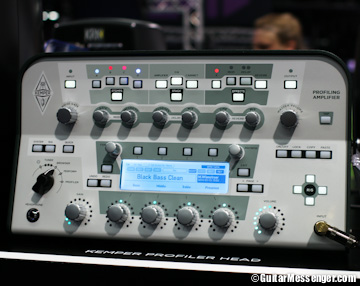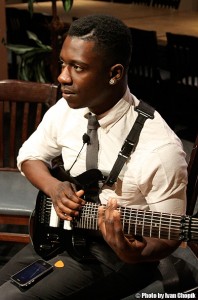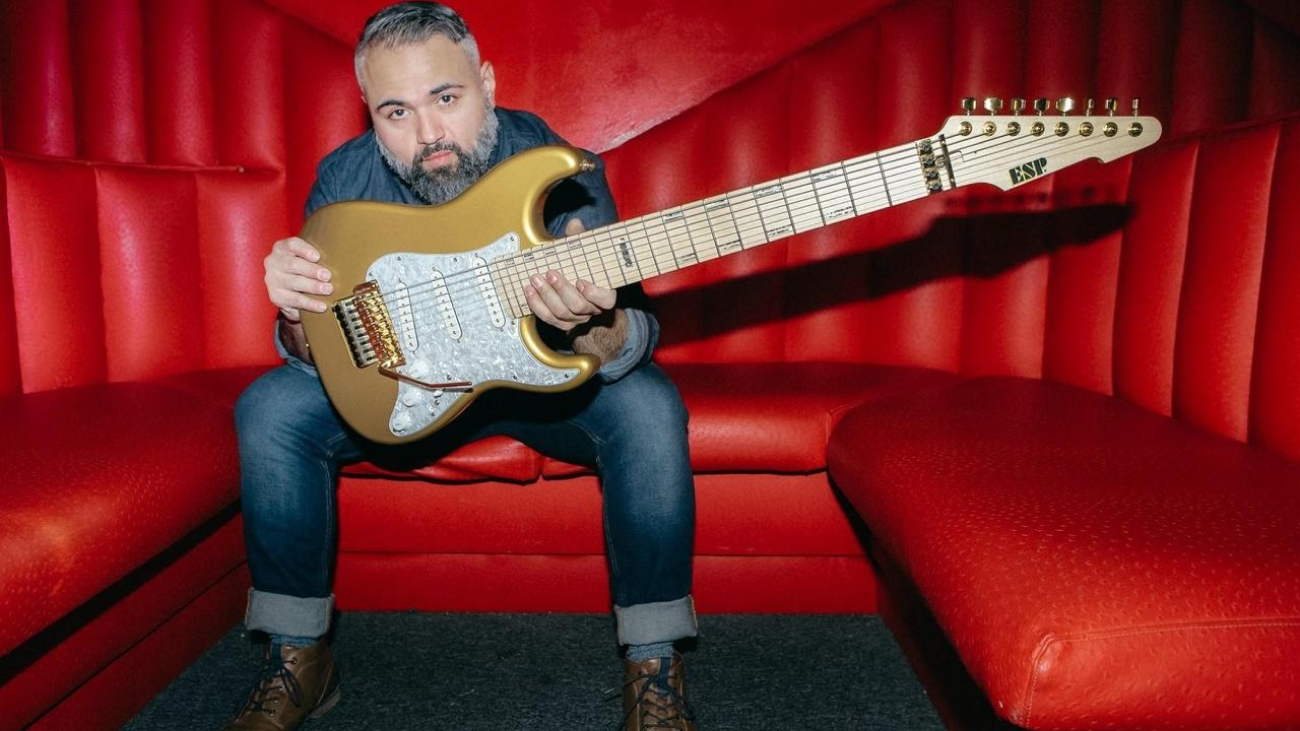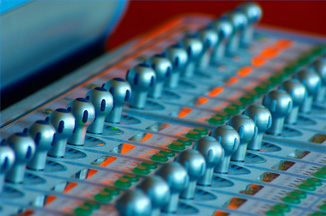Guitar Messenger’s Ivan Chopik had a chance at this year’s NAMM to speak with Christoph Kemper, the mastermind behind the legendary Access Virus synthesizers, as well as the revolutionary Kemper Profiling Amplifiers. Unlike traditional modeling amps, which simulate an amp by having a gifted programmer listen to the sound it makes and reconstruct it, the Profiling Amplifiers do the listening themselves and capture the sound of the amp on their own, leaving the player to then tweak that tone to their own taste. Christoph was kind enough to tell us about his history with music technology, and how his interest in the many varied tones of electric guitar turned into a quest to capture all of them.
IC: Tell us a little bit about the company, how you got started with it, and what inspired you to come up with the Kemper Profiling Amp.
CK: Some of you might know that we are in business fifteen to eighteen years right now – we make the Access Virus synthesizers. We aren’t exhibiting the synthesizer here right now, but we’ve been doing this since 1997. Then one year we moved over to the guitar world.
IC: What inspired that move?
CK: We have been making synthesizers for quite a long time, and I thought it would be very interesting to do some new stuff, and I always had guitar amps in mind. I’m not a guitarist myself, but I’ve been producing stuff, and I’ve always loved guitar sounds, distorted sounds. That has always ‘kicked me’ in a way. That was quite a long time ago. I think it was 2006 when I started to do research on guitar amps. I thought there was a bit of a gap in the industry where digital guitar amps already existed – we are not the first guys doing that. I could see that it was not really accepted by guitarists. The tube amp was still the top thing to play. I thought maybe we could change that.
The whole world gets digital, and digital has its advantage, in many ways. The tube technology, which sounds great, is a technology from, like sixty, seventy, eighty years ago…. I thought, how can we bring this into the present? So this is how I started. I did lots of research, and then I was happy to invent the profiling. I thought that a good digital guitar amp should sound like a tube amp, of course. And the best thing [would be] if it sounded not just like a tube amp, but identical.

What is identical to a tube amp? We all know that a tube amp can sound… there’s an infinite number of sounds a tube amp can produce, even if there’s only a limited number of tube amps available. But the infinity comes from the way you choose the microphone, you position the microphone, the way you select the speakers, and all that stuff. So how can we be identical? There’s only one way – we let the people make the model, at home, from the amp they love. That is profiling. Then, our goal was to sound identical, and this is what we achieved.
IC: The Fractal Audio Axe-FX is a really strong unit that’s doing a great job of digital modeling. However, whereas that one’s modeling, you’re capturing existing profiles. So I guess the way you get there is a little bit different.
CK: It’s a little bit different. [With] modeling, you get a model of an amp that is presented to you. You also add, for example, impulse responses or speakers to that, and combine that, which is a very good thing. You also get to this sort of ‘infinity’ of sounds with that. We chose a different way.
Modeling is great and we also do modeling; like the stomp boxes, the distortion pedals – it’s classic modeling. From my perspective, classic modeling is building something up, listening to it, and tweaking it until it sounds identical. It’s not a really scientific approach that I do, but I think it’s fine. Modeling is a lot of work, because if we had a modeling amp, there would be more and more requests coming for ‘modeling this amp’ and ‘modeling that amp’ – that’s a lot of work. So I thought profiling is cool, because once this process works, my work is pretty much done, because everybody then can model.
It’s not only just a snapshot that you do, because you really can go [further with it]. You really can consider it as a model, because we have various controls to then modify the sound. I thought it’s a good approach, because we have such a high variety of amp models now of manufacturers I didn’t even know the name of, which is cool, so I’m even learning with that. It’s a very nice process.
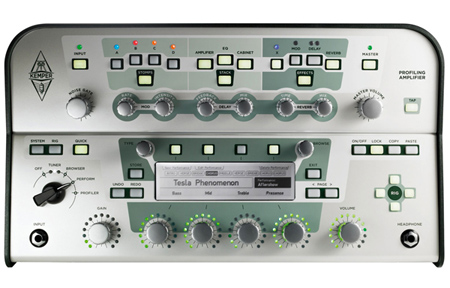
IC: There are many non-linear qualities about tube amps. You can turn up the master volume and it will respond very differently, the EQs will even react differently at different volumes – there’s lots of those things. Do you [profile] a specific setting or is it is something you can adjust afterwards, as well, after you do the capture?
CK: You can adjust it afterwards. We have a whole bunch of deep controls in our amplifier section. Once you have the captured model, you can really go from there and change the way of distortion, change the way how the guitar gets into the distortion, and so on. You can really go from there. In the end, you might get a much larger variety than modeling. Modeling is pretty limited.
With very good modelers, you get many parameters where you can tweak the sound, but still, there is a certain limitation about that. You get a number of parameters; they’re often independent, so you need some skills to get a good sound that differs from the original model. With profiling, if you don’t use your own profiles that you made, you have such a huge number of profiles where you can start from. You don’t have to tweak too much to get the sound that you want. I think that’s a big advantage.
IC: [Scenario]: You have a tube amp that you’re mic’ing up… and you’re listening through your monitors. Same setup, with a Kemper, and you’re A/B’ing them. What kind of differences do you hear, knowing the Kemper Profiler?
CK: Sometimes you hear no difference at all. Sometimes, you might have a little difference, maybe in the bass response, and that is easy to compensate. We often have guitarists saying that in a way, they like the profile better than the original.
IC: That’s cool.
CK: In a way, I didn’t like it too much, because I want it to be equal and perfect. I want it to be equal and not better, but still, I liked it the way it was, the direction that it was [going in]. You nearly can’t hear a difference. When you can hear a difference, you can tell that this difference is not about quality, or feel, or sound. It’s just maybe something…. what differs more is the way you play. So sometimes an A/B comparison is pretty hard to do, because every time you repeat a phrase to do the A/B comparison, you differ more than the amps.

Kemper Profiler Rack
There was a nice story: 2 years ago, we had a profiling session in a studio and we were about to profile a Marshall amp. So I started the process, and then the guy said, ‘Okay, let’s go for lunch right now.’ I said I was in the middle of profiling now, [and he said] ‘Yeah, we can continue later.’ We go off and come back into the studio one hour later. Then, I did the A/B comparison. The sound of the original Marshall had migrated so much, just by… it was not even [that the amp was still] heating up. It was heated up already. But it was so different, that I had to take the profile again. That was amazing. This is something that you would never notice when you play for an hour.
To answer that first question: what is the difference? I can tell there’s nearly no difference, and if you can hear a difference, your amp might even differ more if you let it sit for an hour and do nothing – not even heating it up or cooling it. That was an amazing experience for me.
IC: What’s in store for you for 2014?
CK: We’ll continue to do software updates that are downloadable for free, and this year we’ll do some stuff for bass players. Bass players have already taken over… since like two years. We’ve been busy with a lot of stuff in the past, so now it’s maybe the year for the bass players. At the moment we’re collecting profiles for bass players, and also I have done two effects that are dedicated for bass players. I did the analog octave – like the analog circuit for octavers. It sounds really good and has less tracking problems than the original.
IC: Right. That’s the biggest issue with octavers.
CK: It is an issue. I have really analyzed it and I must say, I can’t blame the guys who invented the analog octaver, because it was a huge effort, even in the digital domain, to get away from these tracking problems – which was very surprising for me. But I managed to deal with that. Also for bass players, if they want to, we have an alternative signal flow – because if you want to do distortion or other fancy stuff on the bass, you often lose the bottom end of your bass. Guitarists can do this all the time, because they still have a bass player, doing the fundamental sound, but if the bass players do, I think they will get in trouble.
IC: A lot of times they’ll compensate by mixing the DI signal with the amp sound.
CK: Yes, and this is exactly what we provide in the profiler. You establish a parallel path, and this is what we call it: ‘parallel path.’ We establish a DI path that passes along the whole signal flow. But it will take two effect slots, so you still have the ability to run, for example, an equalizer or a compressor on that parallel path, and there’s still enough effects slots in the original path. You can store it per preset, this parallel path – and that’s a nice thing. We had some bass players already here, playing that. It’s really fun.
[Special thanks to Chris Dingman and Alexander Pierce for their fantastic video work, and Chris’ additional editing assistance!]
Kemper Profiler Demonstration
Click HERE to check out a video demonstration of the Kemper Profiling Amp by guitarist John Huldt.



